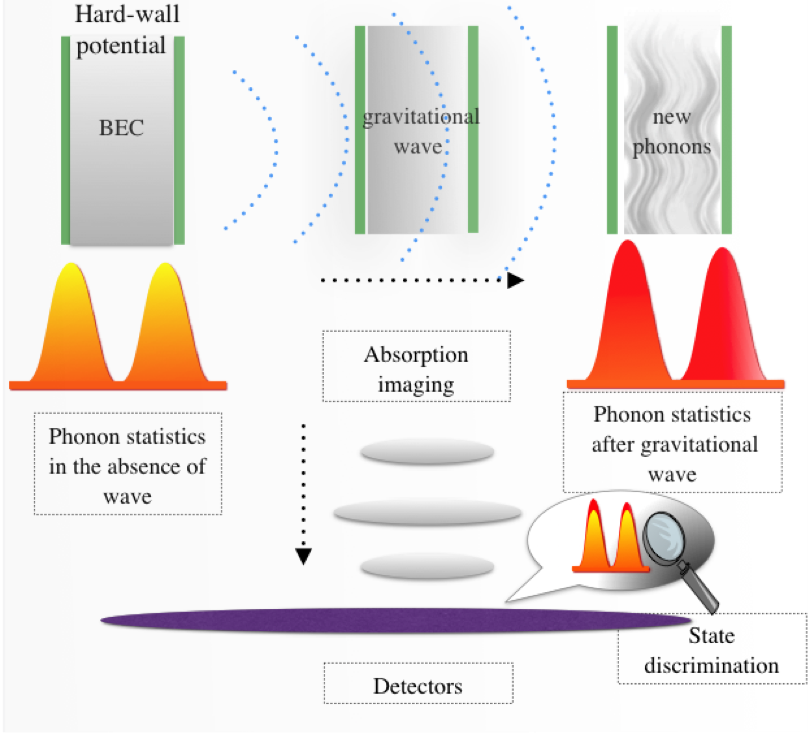Funding for Gravitational Wave Detection
Congratulations to our York Centre for Quantum Technologies (YCQT) colleague, Dr David Bruschi, who in collaboration with Professor Ivette Fuentes, Chair in Theoretical Quantum Optics at the University of Vienna, was successful in securing €232,691 from the Templeton Foundation. Their research proposal, titled “Leaps in cosmology: gravitational wave detection with quantum systems” aims at developing innovative technology for investigating relativistic and cosmological phenomena, such as the physics of compact stars, through measurements of gravitational waves.

The idea is to shift the paradigm for detection of gravitational waves by using a resonant effect in the phononic state of Bose-Einstein Condensate (BEC) known as Dynamical Casimir effect. BECs are (small) systems consisting of many atoms at very low temperatures. At these temperatures, the atoms exhibit quantum behaviour enabling sensitivities to space-time distortions that go way beyond other laser interferometer-based proposals. Detection of gravitational waves is one of the most challenging scientific goals today. The team will focus on applying recent developments in quantum optics, quantum field theory, quantum metrology and BEC science in order to understand the fundamental limitations of the proposed technology. They will tailor their “antenna” to the range of frequencies that are typical of emissions from binary neutron star mergers and pulsars. The gravitational wave pulses emitted by these systems carry important astrophysical information, such as parameters of the equation of state of neutron stars, which cannot be experimentally investigated otherwise. The technology proposed will provide a first method for investigating the physics of astronomical bodies at the limits of the visible Universe.
Our current understanding of the Universe comes only from indirect measurements and observations from Earth. The development of measurement and observation devices, such as telescopes and satellites, has further facilitated space exploration further and beyond what was deemed possible only a few decades ago, at scales not accessible with our own sensorial experience. The research proposed aims at boosting current knowledge of cosmology and physics at the edge of the observable Universe by providing tools based on quantum field theory in curved space-time to detect gravitational waves in a relatively large range of frequencies, especially tailored to neutron star mergers. Understanding these systems might provide a way to understand the physics of phenomena that occur at the spatial and time boundaries of the known universe. Ultimately, it is envisaged that the proposed technologies will provide an instrument for the exploration of overlap between relativity and quantum theories, which describe the very fabric of our universe.